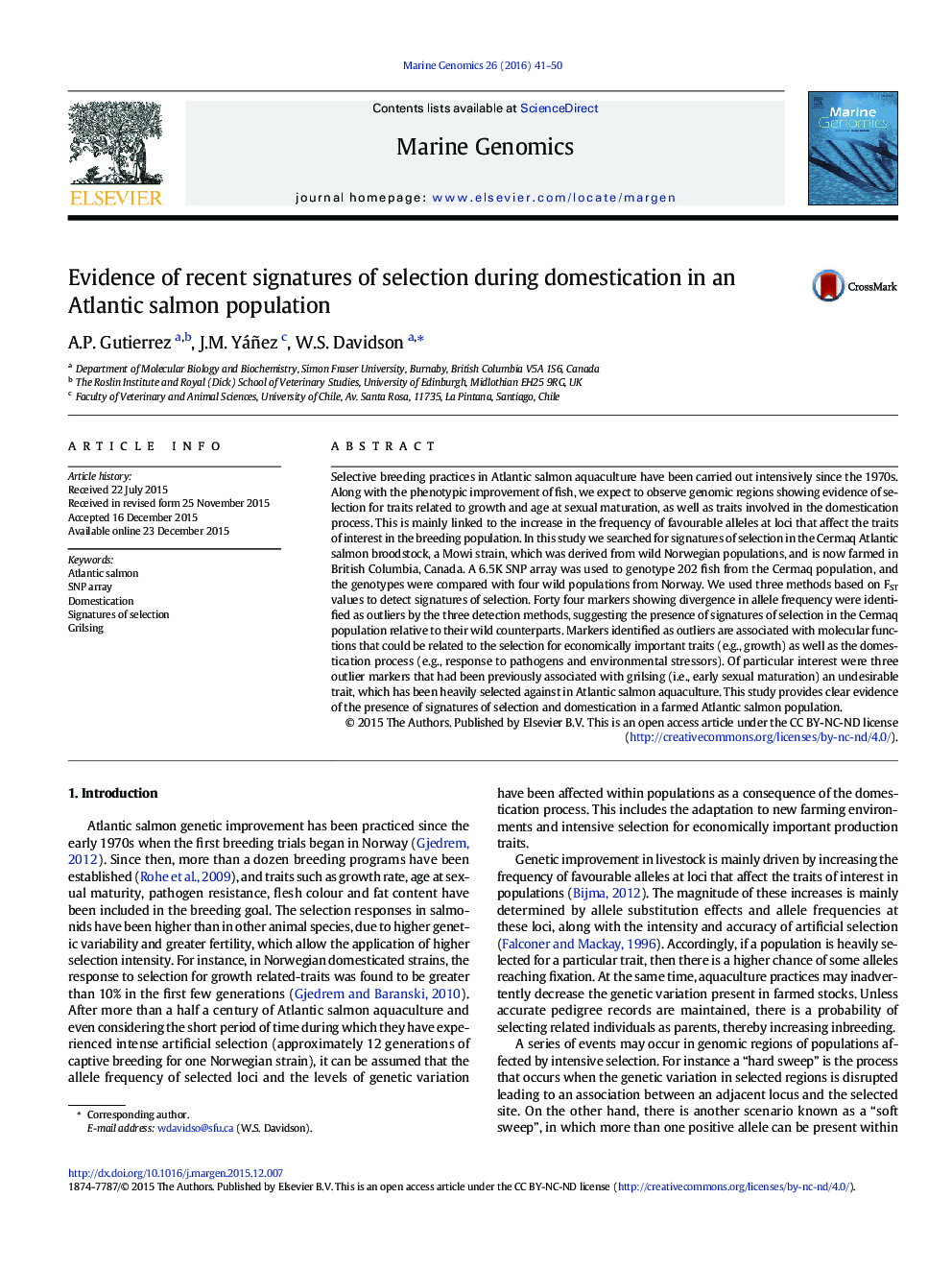| Article ID | Journal | Published Year | Pages | File Type |
|---|---|---|---|---|
| 8388288 | Marine Genomics | 2016 | 10 Pages |
Abstract
Selective breeding practices in Atlantic salmon aquaculture have been carried out intensively since the 1970s. Along with the phenotypic improvement of fish, we expect to observe genomic regions showing evidence of selection for traits related to growth and age at sexual maturation, as well as traits involved in the domestication process. This is mainly linked to the increase in the frequency of favourable alleles at loci that affect the traits of interest in the breeding population. In this study we searched for signatures of selection in the Cermaq Atlantic salmon broodstock, a Mowi strain, which was derived from wild Norwegian populations, and is now farmed in British Columbia, Canada. A 6.5K SNP array was used to genotype 202 fish from the Cermaq population, and the genotypes were compared with four wild populations from Norway. We used three methods based on FST values to detect signatures of selection. Forty four markers showing divergence in allele frequency were identified as outliers by the three detection methods, suggesting the presence of signatures of selection in the Cermaq population relative to their wild counterparts. Markers identified as outliers are associated with molecular functions that could be related to the selection for economically important traits (e.g., growth) as well as the domestication process (e.g., response to pathogens and environmental stressors). Of particular interest were three outlier markers that had been previously associated with grilsing (i.e., early sexual maturation) an undesirable trait, which has been heavily selected against in Atlantic salmon aquaculture. This study provides clear evidence of the presence of signatures of selection and domestication in a farmed Atlantic salmon population.
Related Topics
Physical Sciences and Engineering
Earth and Planetary Sciences
Earth and Planetary Sciences (General)
Authors
A.P. Gutierrez, J.M. Yáñez, W.S. Davidson,
